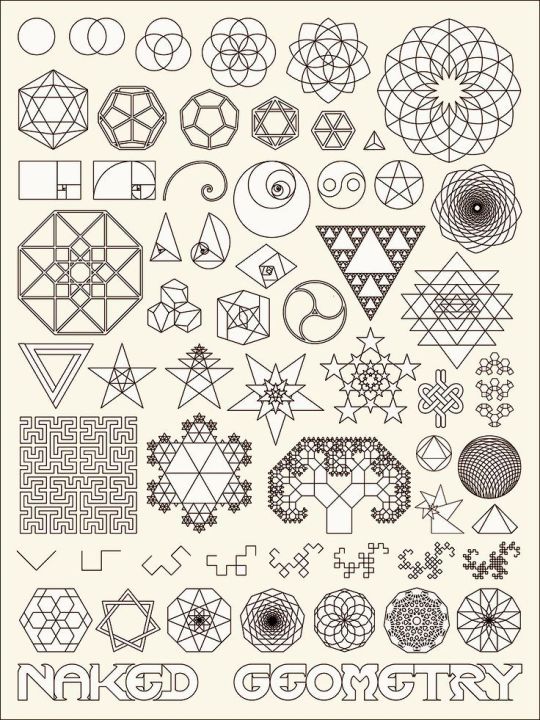#new geometry
Toward a new geometry

Definitions and guiding principles
- Dimension is a primitive concept which for purposes here can be defined as any linearly independent parameter or variable.
- Mathematics is most fundamentally about measurement.
- Rules of mathematics are conceptual tools developed by the human mind and are subject to change if and when such should prove necessary or utilitarian.
- Points, lines and planes are products of the human mind. Neither they nor the realities they represent have continuous existence in space or time but can recur intermittently at intervals which may be either regular or irregular. As a matter of convenience for purposes of description, however, any or all of these may be represented as existing in some continuous abstract sense.
- The whole is greater than the part and has emergent properties not found in any single part or any number of subdivisions of the whole.
- The consequences of number structure and interaction cannot be explained entirely on a local basis but emerge from holo-interactive dynamic processs throughout an entire system or any portion thereof in conceptual focus.
- It is always possible to express a reflection as a rotation and a rotation as a reflection. The two are isomorphic via properly chosen operations.
- Symmetry is of great importance but not always obvious.
- Two foundational guiding principles of reality are continuity and change. These then provide the basis and primary focus of mandalic geometry.
- Of the two types of change, cyclic and sequential, cyclic change is the more fundamental.
- Neither coordinates nor coordinate systems are a feature of nature. They are man-made devices which are pragmatic and utilitarian means by which to grasp a reality which itself has no need of them. Geometry nevertheless requires these crutches to exist and execute its functions.
- Geometry frequently also requires conventions of expression to promote widespread understanding of content but should strive to be as convention -free as possible.
- Ambiguity is a permissible feature, in fact a necessary feature, of mandalic geometry. This is related to its probabilistic nature and multiple-valued logic which reflect what we, from our limited vantage point, misunderstand to be paradoxes of nature.
Axioms
- Numbers can be characterized by dimension of context.
- A number may be embedded in multiple dimensions concurrently, existing in variant forms specific to the dimension(s) of context.
- The same number may function differently in different dimensional contexts. The dimension of context of a “point” described by a number or subsidary number delimits its expression. In other words, the expression of a number in spatiotemporal terms is determined by its dimensional context. In referring to a number or subsidiary number in any of their variants, therefore, the dimension of context must always be specified.
- It may not always be possible to identify the full dimensional context of a number. It is sufficient to determine and elucidate those contexts essential to elaboration of the specific operation(s) under present consideration.
- Numbers are not necessarily elemental. They may consist of parts or subsidiary numbers which refer to various different dimensional contexts.
- A point is not dimensionless extension in space. It is an emergent feature of the system-as-a-whole which appears intermittently at the common intersection of three or more dimensions. Points, lines and planes are evanescent occurrences in terms of geometry and spacetime. They, and the things they represent, are fleeting events which come and go. Repetition is possible (in a conceptual sense certainly; possibly in a material/energetic sense as well) but not inevitable.
Rejected definitions
- The definition of a point found in Euclid’s Elements: A point is that which has no part. [This definition may or may not have been in Euclid’s original Elements.]
- The definition of a line found in Euclid’s Elements: A line is breadthless length.
- The definition of a surface found in Euclid’s Elements: A surface is that which has length and breadth only.
Rejected axioms
- The real numbers are order-isomorphic to the linear continuum of geometry. In other words, the axiom states that there is a one to one correspondence between real numbers and points on a line. This has been described as the Cantor–Dedekind axiom. The Cartesian coordinate system implicitly assumes this axiom which then becomes the cornerstone of analytic geometry.
Rejected notions
- Things which coincide with one another equal one another. [Euclid’s Common notion 4]
Also important to note:
- Euclid’s first postulate states that any two points can be joined by a straight line segment. It does not say that there is only one such line; it merely says that a straight line can be drawn between any two points.
Image credit: James Gyre-Naked Geometry
© 2016 Martin Hauser
Please note: The content and/or format of this post may not be in finalized form. Reblog as a TEXT post will contain this caveat alerting readers to refer to the current version in the source blog. A LINK post will itself do the same. :)
Scroll to bottom for links to Previous / Next pages (if existent). This blog builds on what came before so the best way to follow it is chronologically. Tumblr doesn’t make that easy to do. Since the most recent page is reckoned as Page 1 the number of the actual Page 1 continually changes as new posts are added. To determine the number currently needed to locate Page 1 go to the most recent post which is here. The current total number of pages in the blog will be found at the bottom. The true Page 1 can be reached by changing the web address mandalicgeometry.tumblr.com to mandalicgeometry.tumblr.com/page/x, exchanging my current page number for x and entering. To find a different true page(p) subtract p from x+1 to get the number(n) to use. Place n in the URL instead of x (mandalicgeometry.tumblr.com/page/n) where
n = x + 1 - p. :)
-Page 314-
